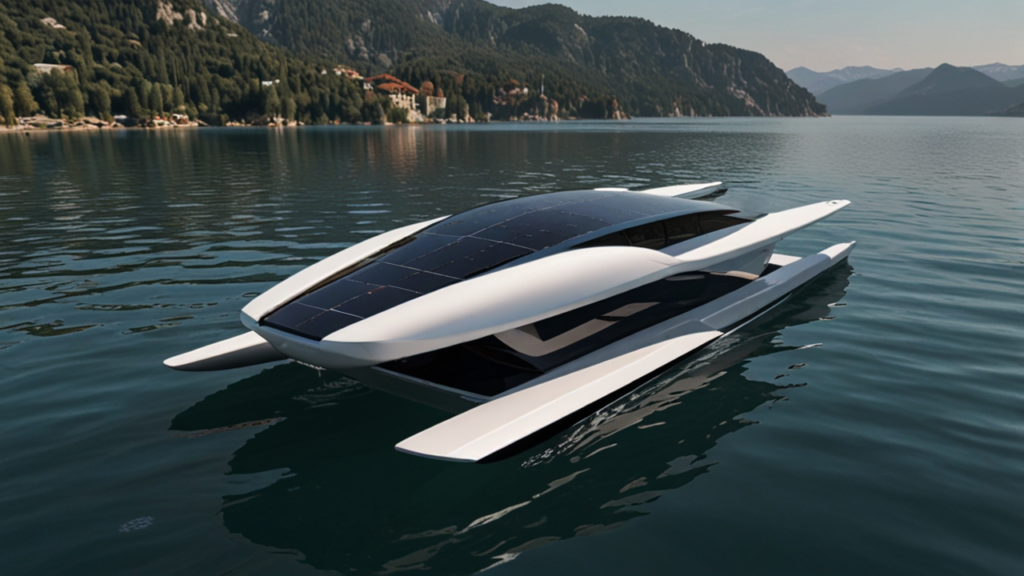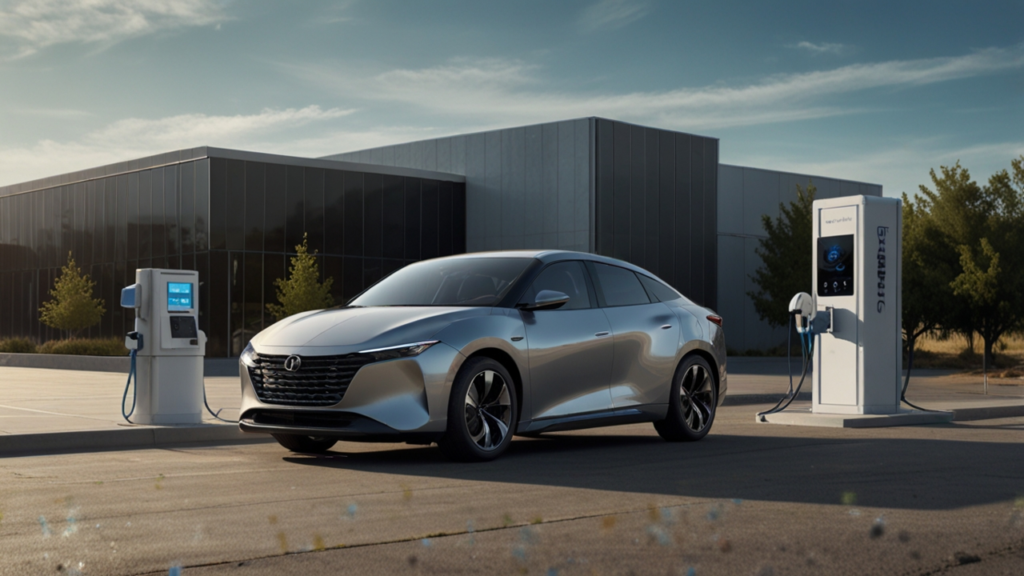EV Charging Infrastructure: 6 Vital Networks
The transition to a cleaner transportation future is well under way with the rapid roll-out of charging networks that support electric vehicles. As industry experts and governments invest billions into expanding these networks, the landscape of how and where you charge your vehicle is evolving. In this article, we explore every aspect of these networks—from their origins and technical evolution to real-world case studies that highlight their impact.
Whether you’re a seasoned EV driver or new to the world of electric vehicles, you’ll find clear explanations and up-to-date data that demystify these advancements. Our discussion covers everything from ultra-fast charging stations to grid-integrated power management systems. This detailed overview is designed for readers of all knowledge levels and uses a friendly, interactive tone to invite you to explore modern mobility solutions.
Let’s dive into the world of EV charging infrastructure, examining its history, current developments, global comparisons, and future trends. As you read, think about your own experiences and imagine how these innovative networks might soon change your daily drive.
Table of Contents
- Introduction to EV Charging Infrastructure
- Evolution and History of EV Charging Infrastructure
- How Electric Stations Enhances EV Charging Infrastructure
- Fast Charging Systems and Their Applications
- Real-World Case Studies of EV Charging Infrastructure
- Grid Integration in Modern EV Charging Infrastructure Solutions
- Future Trends: Smart Networks and Beyond
Introduction to EV Charging Infrastructure
Overview and Importance
EV charging infrastructure is a critical element transforming the transportation landscape. This innovative system drives the acceptance and expansion of electric vehicles globally. It integrates a network of ultra-fast DC charging stations, residential units, workplace chargers, highway systems, urban hubs, and grid-integrated controllers. These components work together to ease range anxiety and support reliable long-distance travel. In this discussion, we will examine the overall impact of deploying a holistic charging network.
In many developed nations, the early adoption of public chargers was supported by policies and incentives, which fueled rapid growth. Data from Cervicorn Consulting highlights that the market was valued at $32.97 billion in 2024. This investment reflects a coordinated effort among governments and industry players to create robust networks that support every charging need. Have you considered how the availability of charging points might affect your next commute?
For readers interested in similar mobility innovations, check out Electric Vehicles to see how these advancements are shaping the future.
Infrastructure Components
The EV charging ecosystem comprises multiple components, each enhancing the performance and reliability of the network. Components include home chargers, workplace solutions, highway corridors, and urban hubs. Governments and private companies invest in these segments to ensure that public charging remains accessible, fast, and reliable.
Specifically, common terms such as “ultra-fast DC charging” and “grid-integrated power management” are essential to understanding this network’s capabilities. For instance, the inclusion of smart charging systems and vehicle-to-grid (V2G) integrations demonstrates a move towards transforming electric vehicles into energy management assets. The goal is to support not only personal travel but also broader energy needs. What role do you feel these infrastructure components play in building a sustainable future?
For further reading on modern approaches in technology, try Future Transport Solutions as a resource.
Evolution and History of EV Charging Infrastructure
Historical Milestones
The evolution of EV charging infrastructure began in the early 2010s alongside the launch of mass-market electric vehicles like the Nissan Leaf and Tesla Model S. Early implementations focused primarily on slow AC chargers in urban settings, which were often part of pilot projects. With increasing public demand and advancements in battery technology, these charging systems rapidly evolved.
Significant milestones include the introduction of fast-charging networks following government incentives such as the Bipartisan Infrastructure Law and the Inflation Reduction Act in the U.S. North American markets saw notable growth due to these policies. According to Plug In America, which anticipates future trends, such incentives were crucial for overcoming range anxiety. Does this historical progression resonate with your experience in technology adoption?
Additionally, readers might explore Energy Efficiency for insights on how historic infrastructure developments align with energy-saving trends.
Regional Developments and Policies
Regionally, the charging infrastructure has advanced at varying speeds. In the Americas, early U.S. initiatives gradually expanded following federal investments. European countries like Norway and the Netherlands have been pioneers, with Norway achieving up to 88% battery electric vehicle (BEV) sales by 2024. These advancements were supported by the EU’s directives ensuring minimum charging station density.
Meanwhile, Asia—led by China—has installed over 60% of new public chargers since 2020. Japan and South Korea followed, focusing on urban and highway corridor deployments with innovations like CHAdeMO fast charging. This regional disparity points to distinct policy influences, with China requiring one public charger per 10 EVs, nearly achieving its target. For more detailed industry data, see Virta Global. What regional policy do you think most effectively promotes growth?
Discover more by visiting Smart Mobility.
How Electric Stations Enhances EV Charging Infrastructure
Residential and Workplace Systems
Residences and workplaces host the majority of EV chargers, where networked AC chargers are commonly used. These systems often integrate with home energy management technologies, including solar power and time-of-use pricing features. Such chargers are especially designed to be user-friendly and efficient, ensuring that most charging activity occurs within a familiar setting.
In addition, the integration of remote control via mobile applications and the preparedness for vehicle-to-grid (V2G) operations are revolutionizing how we think about home energy. For instance, these smart systems dynamically adjust to utility pricing signals and grid load conditions. Statistics show that private chargers still outnumber public ones by a ratio of 10:1, emphasizing their widespread adoption. How do you think the expansion of home charging systems will impact your energy habits?
For more innovative ideas, visit Digital Transformation for related content.
Electric Station Technology and User Experience
Electric stations are evolving with technology that emphasizes ultra-fast charging and user-centric design. Now capable of delivering 150 kW to 350 kW—and even up to 3.75 MW for heavy-duty vehicles—these stations ensure that vehicles can be charged quickly during long trips. This technology, which includes standards like CCS and CHAdeMO, reduces charging times significantly.
Moreover, advancements such as AI-driven predictive analytics and smart grid integrations optimize the charging experience while reducing downtime and operational costs. These developments allow for improved grid load management and more responsive infrastructure design. The comprehensive systems are verified by studies such as those presented by EV Charging Summit. What improvements would you like to see in the charging process?
Have you ever considered how an optimized charging station could change your travel routines?
Fast Charging Systems and Their Applications
Ultra-fast Charging and Heavy-Duty Solutions
Fast charging is revolutionizing long-distance driving, significantly reducing downtime. Ultra-fast DC charging stations deliver between 150 kW and 350 kW and now offer megawatt-capacity up to 3.75 MW for trucks. This significantly slashes charging times—to as little as 15 to 30 minutes for passenger vehicles and under an hour for heavy-duty vehicles.
These systems use advanced power electronics and are deployed along strategic highway corridors. For example, Europe’s TEN-T networks emphasize station placements every 60 km, ensuring no driver is far from a charging point. The introduction of the Megawatt Charging System (MCS) in new vehicles is a clear game changer. Are you excited about how these advancements might reduce long-distance travel interruptions?
For an in-depth look at market sizing, refer to data from Strategy& PwC.
Fast Charging in Urban Outlets and Fleet Services
Urban fast charging hubs provide high-density charging solutions where residential parking might be limited. These hubs are often co-located with retail centers or transit nodes and support fleets including taxis and ride-hailing services. The goal is to strategically support high-demand areas where many EVs require quick turnaround charging.
City-level charging networks alleviate the limitations of home charging by providing public access with rapid replenishment of energy. The collaborative approaches used in urban centers also include partnerships with local businesses to enhance accessibility. As demand increases, future models suggest that urban hubs will incorporate a mix of traditional and innovative technologies. How do you think your city could benefit from these urban outlets?
This evolution is part of how modern society adapts to rapid technological change. For more information on future transport trends, click Future Mobility.
Real-World Case Studies of EV Charging Infrastructure
Case Studies in the Americas and Europe
Across the Americas, Electrify America stands out with over 3,500 ultra-fast chargers. Their strategic focus on highway corridors and urban hubs has created a robust network, fueling significant EV adoption. In California, aggressive state mandates have spurred widespread installation in both workplaces and multi-unit dwellings.
In Europe, Norway’s dense public charging network has helped it reach an 88% BEV sales rate. The pan-European pathfinder, Ionity, operates 350 kW stations every 120 km along major highways. These case studies demonstrate that well-planned investment in charging infrastructure can drive market success. Do these success stories inspire confidence in the continued expansion of these networks?
For further details on these studies, you can access research from Cervicorn Consulting.
Case Studies in Asia and Australia
In Asia, China has quickly become a global leader with over 3 million public chargers installed—of which 1 million are fast chargers. This success is partly driven by a national mandate requiring one charger per 10 EVs, ensuring near-optimal coverage. Meanwhile, Japan and South Korea have focused on urban hubs and highway corridors, with Japan pioneering the CHAdeMO fast charging standard.
Australia is not far behind, with companies such as NRMA and Chargefox establishing national highway corridor networks. These deployments frequently integrate renewable energy sources, ensuring environmental and operational sustainability. How might these successful regional examples influence new projects in your area?
For more insights on global trends, refer to additional statistics provided by BloombergNEF.
Comprehensive Comparison of Case Studies
| Example | Region | Charging Speed | Deployment Density |
|---|---|---|---|
| Electrify America | U.S. | 150-350 kW | Highway corridors |
| Ionity | Europe | 350 kW | Every 120 km |
| Chinese Public Chargers | Asia | Fast chargers | 1 per 10 EVs |
| NRMA & Chargefox | Australia | Ultra-fast | Every 150 km |
| NORWAY Network | Europe | Fast & Ultra-fast | Urban & highways |
Grid Integration in Modern EV Charging Infrastructure Solutions
Smart Charging and V2G Integration
Modern charging infrastructure is increasingly integrating into the grid, transforming EVs into dynamic energy assets. Smart charging systems use real-time analytics to balance supply and demand. Additionally, vehicle-to-grid (V2G) technologies allow electric vehicles to feed energy back into the grid during peak times. This integration is crucial to enabling renewable energy deployment and reducing overall grid load.
Many pilot projects in regions such as the U.S., Australia, and China are already showing how this synergy can lower costs and increase grid reliability. The integration also leverages distributed energy resources, ensuring that every EV contributes to a more resilient power network. How do you envision your personal vehicle acting as an energy resource?
For further study, consider exploring research that examines how grid interactions enhance system reliability.
Benefits and Challenges of Grid-Integrated Systems
Grid integration opens the door to new business models that blend energy management with transportation. Benefits such as reduced ancillary service costs and higher renewable integration are already evident in early implementations. However, challenges remain, including cybersecurity risks and the need for sophisticated communication protocols between vehicles and grid operators.
Significant research, notably from several analytics reports, shows that smart grid integration can reduce downtime and overall energy costs. Such systems require robust IT support to handle complex, dynamic data streams. This evolution represents a shift towards a more decentralized yet interconnected power network. What potential challenges do you foresee in integrating these systems into existing grids?
For more information on challenges and benefits, you might review additional literature available through industry publications.
Future Trends: Smart Networks and Beyond
Emerging Technologies and AI Integration
The future of these networks includes further automation and AI integration. With advances in machine learning, charging networks will soon be able to predict demand, optimize station placement, and dynamically alter power outputs based on grid needs. Artificial intelligence is set to create responsive networks where energy distribution is seamless.
These emerging trends point to a future where the infrastructure not only supports but also optimizes energy use efficiently. This evolution could lead to systems where vehicles autonomously balance energy loads and even decide the optimal time to charge. According to projections by BloombergNEF, such smart integration is central to future mobility solutions. What futuristic feature excites you most about integrated smart networks?
These advancements promise to revolutionize how we interact with technology daily, making even routine tasks smarter and more efficient. Have you ever wondered how AI can change your daily travel habits?
Business Model Innovations and Sustainability
As technology evolves, so too do the business models underpinning EV charging infrastructure. Integrated energy services that bundle charging, storage, and renewable energy are emerging rapidly. This integration is fostering collaborations between utilities, automakers, and technology providers. Such models are crucial in supporting sustainability while reducing overall operating costs.
New models are expected to not only drive down costs but also stimulate innovation in grid management and customer service. These changes are paving the way for more efficient, reliable, and sustainable energy networks. How do you think collaborative business models will influence the adoption of EV technology?
For more insights, you could review industry analyses that discuss these new models in depth. What are your thoughts on a future where sustainability and efficiency go hand in hand?
EV Charging Infrastructure: A Captivating Outlook
This section provides an engaging glimpse into the overall narrative without delving into technical jargon or specific terminologies. Imagine a future where everyday journeys are not hindered by traditional fueling methods, but instead powered by an extensive network that transforms the very nature of travel. In this refreshing perspective, the focus shifts to the human experience—a seamless integration of convenience, efficiency, and sustainability. Visitors in this forward-thinking environment benefit from systems designed to adapt intuitively to their daily routines. Picture parks, coffee shops, and workplaces becoming hubs of activity, where charging stations double as social spaces, fostering community and innovation.
Innovations are driving this landscape, spawning economic opportunities and paving new pathways for collaboration between businesses and local communities. The narrative here is one of transformation, where every aspect of daily life is entwined with progress and smart energy solutions. The possibilities seem endless as the boundaries between technology and everyday utility blur, forging a new way of thinking about transportation and energy. Undoubtedly, this vision encourages us to reimagine what our cities could become and how our journeys may evolve. It invites you to dream of a future that is not limited by traditional constraints, urging you to explore bold new ideas and embrace change.
This outlook not only inspires but also challenges us to consider how innovation turns obstacles into opportunities. The creative spirit behind these transformations reflects a generation’s pursuit of progress and hope for a better tomorrow.
FAQ
What is EV Charging Infrastructure?
EV Charging Infrastructure refers to the network of hardware and software systems that provide electric power to electric vehicles. This infrastructure includes public charging stations, residential chargers, workplace systems, and grid-integrated smart networks designed to support the transportation needs of electric vehicles.
How did the charging network begin?
The development started in the early 2010s with the introduction of mass-market electric vehicles like the Nissan Leaf and Tesla Model S. Initially, slow AC chargers were deployed in limited urban areas, followed by rapid progress fueled by governmental incentives and technological advances in fast charging systems.
What role do fast charging stations play?
Fast charging stations drastically reduce the time required to replenish vehicle batteries, making long-distance travel possible and convenient. They use ultra-fast DC technology capable of delivering high power output, cutting down traditional charging times to minutes instead of hours.
How does grid integration enhance these systems?
Grid integration enables smart charging systems to balance load demands and use vehicle-to-grid (V2G) technology. This not only improves energy efficiency but also supports the broader electrical grid by balancing supply and demand, especially during peak times.
What future trends can we expect?
Future trends include the integration of artificial intelligence for predictive maintenance, the development of megawatt charging systems for heavy-duty vehicles, and innovative business models that combine renewable energy sources with advanced charging networks.
Conclusion
In conclusion, EV Charging Infrastructure is transforming the way we view transportation. From its historical evolution to the state-of-the-art technologies in fast charging and grid integration, the network is set to revolutionize travel in the coming decades. The multifaceted systems, demonstrated through robust case studies and innovative regional developments, show a promising future where electric vehicles are seamlessly integrated into our lives.
Your feedback is valuable—what part of this transition excites you the most? If you have any insights or experiences to share, please leave a comment or Contact us.
For more information on the ongoing transformation in transportation, be sure to explore additional resources and join discussions on Future Mobility. Together, we can drive the future of sustainable transport forward.
Discover more from Fabelo.io
Subscribe to get the latest posts sent to your email.



